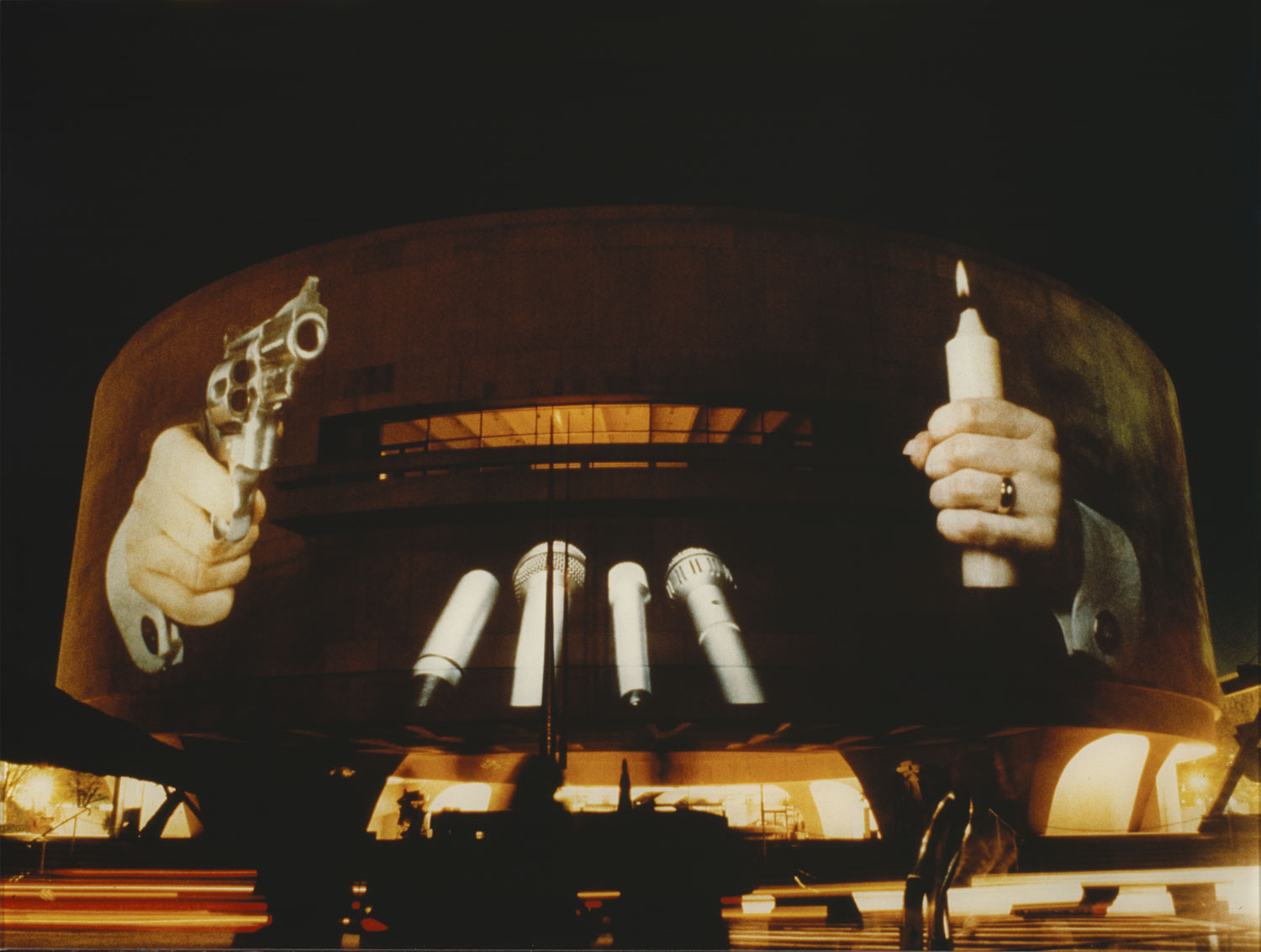
Marking the 30th anniversary of Krzysztof Wodiczko’s site-specific video installation Hirshhorn Museum, Washington, DC, the museum will restage the Polish artist’s ambitious and politically charged projection next month. The work, which is 68 feet wide and spans all three floors of the museum’s facade, hasn’t been shown since it was first projected onto the Hirshhorn for three nights in October of 1988.
On view February 13–15, from 6:30–9:30 pm, the work kicks off the opening of the Hirshhorn’s exhibition “Brand New: Art and Commodity in the 1980s,” curated by Gianni Jetzer.
“Krzysztof Wodiczko’s work is a seminal example of key points within the exhibition ‘Brand New’—one being the DIY approach to making and showing art that characterizes the period, and the borrowing of advertising and film techniques in making art on social issues,” Stéphane Aquin, chief curator at the Hirshhorn, told artnet News.
Krzysztof Wodiczko. Courtesy of the Hirshhorn Museum and Sculpture Garden.
With its overt, politically loaded imagery—including two hands, one gripping a revolver and the other a lit candle, alongside four microphones, as if at a press conference—the project was a response to Reagan-era social policies and the heated presidential campaigns of George H. W. Bush and Michael Dukakis.
Despite these dated references, the work resonates in unexpected new ways with the current political climate in Washington, DC. In fact, some of the issues Wodiczko addresses in the video projection—such as women’s reproductive rights, the death penalty, and the power of mass media—are still firmly at the heart of today’s starkest ideological divisions.
“This is an important work of art history and we believe it needs to be brought back to memory in the form it had thirty years ago,” Aquin said. “But much has changed since 1988 and much has remained the same. Whereas Wodiczko’s work, in 1988, was pointed at a specific context, thirty years later, the imagery the artist uses resonates in a different manner, but no less strikingly and poignantly.”
Wodiczko himself is open to new interpretations. “Today, there are new ways of looking at the work that differ from the original context, with many possible readings,” Wodiczko said. “I’m not sure what will cross the minds of people now. The restaging is more of an archival project, and we shouldn’t force it to be relevant. But maybe people will help this projection by generously trying to make use of it in today’s context. I would be grateful.”